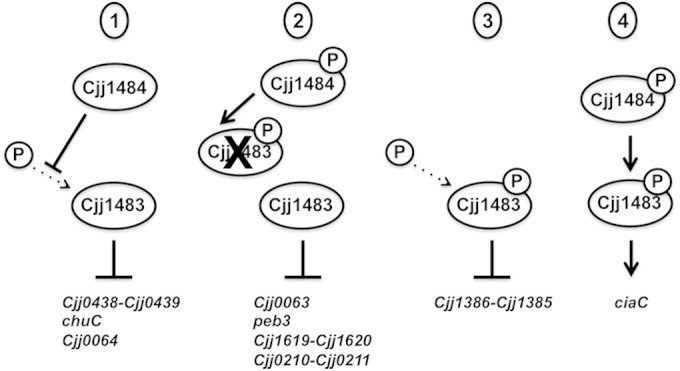FIG 9.

Putative models for how the Cjj1484-Cjj1483 TCS may mediate regulation of different classes of C. jejuni genes. For models 1 to 3, Cjj1483 is proposed to function as a transcriptional repressor, whereas for model 4, Cjj1483 likely functions as a transcriptional activator. In each model, we indicated whether Cjj1483 must be phosphorylated to mediate transcriptional regulation and how phosphorylation or prevention of phosphorylation may occur. Dotted arrows indicate phosphorylation that may occur through noncognate phosphodonors. In model 1, Cjj1484 is predicted to serve as a phosphatase to maintain Cjj1483 in an unphosphorylated state, whereas in model 2, Cjj1484 is predicted to phosphorylate Cjj1483 to inhibit its repressive activity. In model 3, the Cjj1484 HK plays no role in gene expression. In this model, phosphorylation of Cjj1483 via noncognate phosphodonors may mediate repression by the response regulator. In model 4, phosphorylation of the Cjj1483 RR via Cjj1484 appears to be required for Cjj1483 to function as a transcriptional activator. See Discussion for more details.
